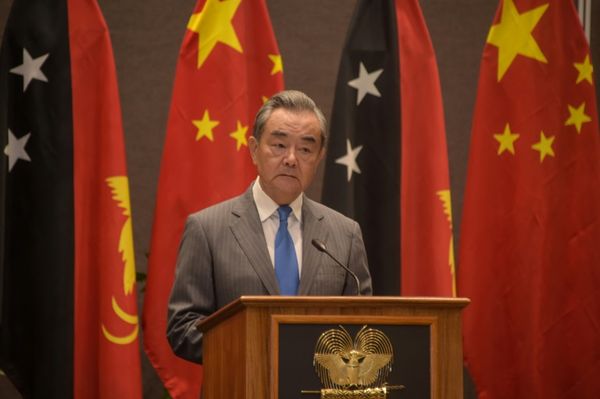
AIFs give access to not-so-conventional asset classes such as venture capital (VC) funds investing in early-stage startups, unlisted equity funds investing in growth stage or pre-IPO companies, and hedge funds that deploy complex trading strategies in the listed equity space. Since these are risky investments, market regulator Sebi has mandated a minimum investment of ₹1 crore in AIFs.
Investors’ willingness to take higher risks with startups and unlisted equity space, which form a significant portion of assets under management of AIFs, fostered speedy growth of the industry in the last few years. These funds, especially, venture capital AIF funds, despite higher risks, have generated significant alpha (see table) compared to the broader market indices in India.
You might also like
iPhone sales in India headed for another record
IT companies likely to slash campus hiring in FY24
What lies next for India’s shaky exports story
Marico’s Q2 update fails to lift spirits
On the other hand, long-only equity funds delivered poor performance. This brings into question the higher fee and lower tax efficiency these category of funds come with.
The above performance analysis is based on the Crisil AIF Benchmarks research, which reported category average returns of AIFs as on 30 September 2021. For benchmarking, Crisil divided the entire AIF industry into seven sub-categories based on the type of assets and strategy that the fund invests in. Note that AIF benchmarking in India is still in its nascent stage and due to the diverse nature of investment themes that each AIF adopts, there is a possibility of comparing not-like-to-like funds.
However, considering that benchmarks give insights into how the investments fared on an average basis, we look at the performance of three benchmarks designed by Crisil- Venture Capital Funds (part of category I AIF), Equity Funds – Unlisted (part of category II AIF) and Long-only Equity Funds (category III AIF).

Unlisted equity space
Generally, the Venture Capital Funds category comprises funds that invest in early-stage technology businesses. Due to the close-ended nature of most AIFs in category I and II with different entry and exit points, performance of funds in such categories is assessed on a ‘vintage year’ basis.
Vintage year is the FY in which a scheme made its first investment, in simple terms. If the first investment was made between 1 April 2014 and 31 March 2015, its vintage year will be Vintage FY15. Now, the performance of venture capital funds for the FY15 vintage year is the annualized internal rate of return (IRR) to date, of all the funds that deployed money in FY15.
As per the Crisil analysis, venture capital funds outperformed the public market index - S&P BSE 500 TRI- in four out of seven vintage years by a good 8-27 percentage points.
For the same vintage periods, the performance of unlisted equity funds, however, is mixed with outperformance in two out of seven vintage years by 3-4 percentage points.
Nevertheless, wealth managers and family offices that Mint spoke to are very positive about investing in the unlisted equity space—both venture capital and unlisted space.
“The confidence about investing in unlisted AIF space comes from the broad economic growth story of India, great entrepreneurs and good teams solving for it. AIF industry is also maturing. There are good fund managers with track records professionally managing the funds, which are also regulated by Sebi," said Sandeep Jethwani, co-founder of Dezerv.
Wealth managers believe that the benchmark averages out the returns that funds in the category deliver and points to the importance of selecting a good fund manager.
According to Munish Randev, founder & CEO, Cervin Family Office & Advisors, most of their clients started investing in venture capital and unlisted equity space in FY15 to FY17 vintage years and haven’t exited yet. He believes that the expected returns on those investments till date is in the range of 25-40% IRR.
Experts also believe that timing of investment in the unlisted space matters in generating optimal returns. Jethwani said “investments in the unlisted space have to be looked at from a similar lens as SIP (systematic investment plan) of MFs. You cannot put all your money in one year. If investors have ₹100, I strongly encourage them to invest ₹20 every year for the next five years. This way, they don’t catch one bad cycle."
On the overall allocation to unlisted equities, Roopali Prabhu, chief investment officer at Sanctum Wealth, said, “Our suggestion to clients is to invest 10-15% in the unlisted space. The break-up between the venture capital funds and the growth funds depends on the risk tolerance of the investor. The risk of mortality of companies in the growth stage is lower and thus risk of investing in category II funds in such companies is lower. Understandably, they may not make as much return as they could have by investing in VC funds. But that’s a risk-reward trade-off.
Ashish Fafadia, partner at Blume Ventures, one of the largest Indian venture funds, said he is convinced that this is not a product for retail investors. “Investors need to understand that it’s an illiquid investment and should stay invested for a minimum of 6-8 years. The investment provides good diversification to the portfolio, but both fund manager and investor need to be sophisticated and educated enough to make the most of it," added Fafadia who also represents Indian Private Equity & Venture Capital Association.
Long-only Equity
Besides venture funds and unlisted equity funds, there are long-only Category III AIFs too. These invest in the listed equity space and are comparable to the actively managed equity-oriented mutual funds and PMSes.
The only difference is that the former can make use of the leverage (borrowing) to maximize returns. Sankaranarayanan Krishnan, quant hedge fund manager at Motilal Oswal Financial Services, says that opacity of the portfolio that the AIF provides is its biggest strength.
However, wealth managers do not think the category can offer much to investors or fund managers.
The Crisil benchmark suggest that AIFs on a gross return basis have not outperformed the broader market index or the category average of diversified flexi-cap MFs. Note that, there could be differences in exposure to the market segment—large, mid and small caps by these funds.
“Even as per the rolling return analysis of actively managed MFs, PMSes and Category III listed equity AIFs in the last three years, MFs are offering better risk-adjusted returns," said Jethwani.
Randev, too, is of the same opinion, and said that his firm avoids investing in long-only equity funds as these are less tax-efficient. he said,“The long-only equity AIF funds have some tax leakages as compared to mutual funds. Since the AIFs are taxed at fund level they will have to pay capital gains tax every time they trade, whereas a MF is taxed in the hands of the investor only at the time of redemption. Also, AIFs tend to higher total fees as compared to PMS".
Conclusion
As per the Crisil report analysis, investment in a good VC fund in the last few vintage years would have generated good risk-adjusted returns. The benchmark returns representing the category average performance show meaningful alpha compared to broader equity market indices. The performance of unlisted equity funds in the Category II bucket, till September 2021 was mixed. Even at present when the market sentiment is low, wealth managers believe that investors can consider investing in the VC/unlisted equity space in a staggered manner.
On the other hand, the long-only equity AIFs in Category III couldn’t prove their outperformance. In the long run, investors will be better off investing in a diversified MF or PMS.
Elsewhere in Mint
In Opinion, Nouriel Roubini says the stagflationary debt crisis he had predicted is here. Vivek Kaul writes on the price we pay for over-printing of money. Deep Mukherjee points out a risk posed by fintech operators. Long Story unveils the promise and perils of Ameerpet.







